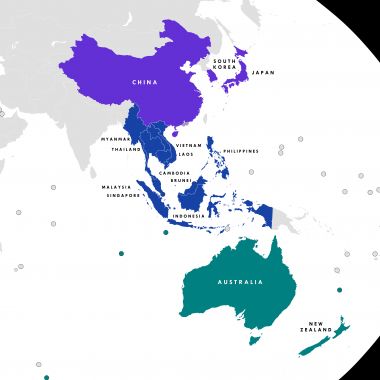From a business standpoint, Washington is leaving the field open to China in the Asia-Pacific since the Trump and Biden administrations. (illustration: 123RF)
–
TO ANALYSE. Are Americans sleeping on gas in Asia-Pacific when it comes to trade? On January 1, the world’s largest free trade agreement will enter into force there under the leadership of Communist China, as Washington insists on giving Beijing a clear field in the region from the Trump and Biden administrations.
Thus, at the start of 2022, the Regional Comprehensive Economic Partnerhip (RCEP) will oversee the trade of 15 Asia-Pacific countries, including Australia, Japan, New Zealand, Brunei, Malaysia, Singapore, Vietnam, Cambodia, Indonesia, Laos, Burma, the Philippines, Thailand, South Korea as well as China.
Negotiations to conclude this agreement, which began in the early 2010s, first included India. The country of 1.4 billion people (the world’s fifth-largest economy) finally pulled out of talks at the end of 2019, paving the way for the deal to be concluded on November 15, 2020.
This vast market which will revolve around the Chinese economy will bring together nearly a third of the planet’s GDP, 53% of world exports and 2.3 billion people, underlines the American magazine. Barron’s, a sister publication of Wall Street Journal.

The Regional Comprehensive Economic Partnerhip (RCEP) brings together nearly a third of the planet’s GDP and 2.3 billion people. (illustralion: Tiger 7253 / CC)
–
RCEP outperforms the other major Asia-Pacific free trade area, theComprehensive and Progressive Trans-Pacific Partnership Agreement (CPTPP, previously known as the Trans-Pacific Partnership), which entered into force in December 2018.
Canada is participating, but the United States withdrew in 2017, when the Trump administration took power in Washington. And, so far, the Biden administration has not shown a willingness for the United States to re-enter the CPTPP.
Signed in 2015, the Trans-Pacific Partnership was the centerpiece of an American pivot in the Pacific. This project of the Obama administration – of which Joe Biden was the vice-president – aimed to contain China and ensure American hegemony in Asia-Pacific.
The CPTPP currently brings together 11 countries. Besides Canada, it includes Australia, Japan, Mexico, New Zealand, Singapore, Vietnam, Brunei, Chile, Malaysia and Peru.
This free trade zone forms a trade bloc of 500 million people, which represents 13.5% of world GDP (the percentage of world exports of the 10 countries does not appear to be available), according to the Canadian government.
RCEP’s impact on Canada
RCEP is not just a free trade agreement; it is also a geopolitically transformational agreement.
As the main economy in the bloc and the largest or second largest trading partner of every RCEP member, China will have a major influence in setting future standards and regulations in Asia-Pacific.
Also, in the years to come, companies (including Canadian women) active in these 15 countries are likely to be increasingly subject to Chinese rules, both for the sale of goods and services.
These standards may be different from those to which Canadian companies are generally accustomed in democratic countries with the rule of law.
– .


